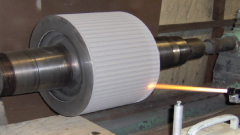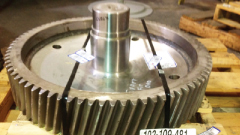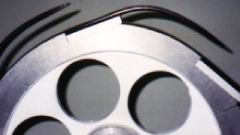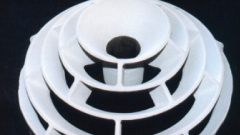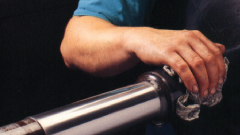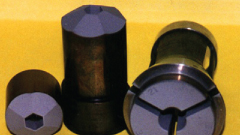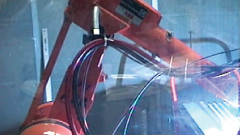WEAR RESISTANT COATINGS
PROTECT AGAINST ABRASION, EROSION, CORROSION, FRETTING/GALLING, CAVITATION, BRINELLING.
REPAIR COATINGS
NO NEED TO SCRAP AN EXPENSIVE PART. REPAIR OR BUILD UP TO A SPECIFIED SIZE. EXTEND PART LIFE.
RELEASE COATINGS
FEATURING DURA-SLIK™ FLUOROPOLYMER COMBINED WITH THERMAL SPRAYED COATING PROVIDES WEAR RESISTANCE ALONG WITH RELEASE PROPERTIES.
THERMAL BARRIER PROTECTION COATINGS
RESISTS TEMPERATURES UP TO 3000° F. ALLOWS THE USE OF LESS EXPENSIVE SUBSTRATE.
LOW COEFFICIENTOF FRICTION COATINGS
COATED COMPONENTS HAVE THE ABILITY TO PERFORM AT HIGHER SPEEDS.
SURFACE TRACTION COATINGS
Long lasting surface finishes that prevent slippage, interruptions & breaks. Improves web tracking and tension control.
BRUSH PLATING
Repair or rebuild to a specified size, tolerance and surface finish. Plate an entire surface or target a small localized area.
GENERAL CAPABILITIES
Services, coating features, part size capability.
Electroless Nickel Plating Coating Assembly
Electroless nickel is useful for maintaining inside dimensions and irregular shapes where uniform assembly tolerances are required. The color of electroless nickel is similar to stainless steel. Electroless nickel plates uniformly in recesses and cavities and do not build up on edges. Corrosion resistance in electroless nickel is good for coatings over .001″ thickness. Medium phosphorus electroless nickel is the most commonly used coating. High phosphorus is used primarily for increased corrosion resistance and in food-grade applications. Mid and high phosphorus electroless nickel deposits are hard as-deposited (HRc40-45). These are hardened by baking to produce a coating similar in hardness to hard chromium (HRc 65-70).
Understand Your Options
When it comes to protecting parts against corrosion and wear, electroless nickel plating has been around for a long time—in fact, more than two centuries. When evaluating surface protection methods, it’s often worth considering this tried and true process. This overview will cover the basics of electroless nickel plating and the different types available, plus advantages and disadvantages to help you make a better-informed decision.
The Basics of Electroless Nickel Plating
Electroless nickel plating is a surface treatment process that deposits a nickel alloy onto a substrate without sending an electric current through the bath or the substrate. Instead, a nickel-phosphorus (NiP) or nickel-boron (NiB) alloy is introduced to a chemical reducing agent, like sodium hypophosphite, that converts the nickel ions nickel metal, resulting in an even deposition of metal onto the substrate. Electroless nickel plating offers many benefits such as a uniform thickness, protection against corrosion and wear, excellent lubricity, magnetic properties, and solderability. The process is also used to coat non-conductive materials. Electroless nickel’s wide range of applications includes computers, electronics, automotive, machinery, oil, and chemical equipment, printing, and food processing.
Electroless nickel plating involves a chemical reaction called autocatalysis that does not need an electric current to pass through the solution to form a deposit. Many use this technique to prevent wear and corrosion. Because nickel is known for its durability, electroless plating helps create an even surface, flexibility in thickness, little deposit build-up, allows for different finishes, and can be used on non-conductive surfaces. This process can save worn parts in high-intensity abrasion areas and where lubricity is necessary. This plating is often found on pipes, fasteners, driveshafts, and valves. It can be applied with a low, medium, and high phosphorus level, depending on the environment it is needed for. Most commonly, it is applied to aluminum, titanium, stainless steel, brass, and copper.
ENP is known to be used on aerospace and automotive components, electrical equipment, salvage, different forms of machinery, and more. Though this process can be pricey, the benefits and lifespan often outweigh the cost risks.

